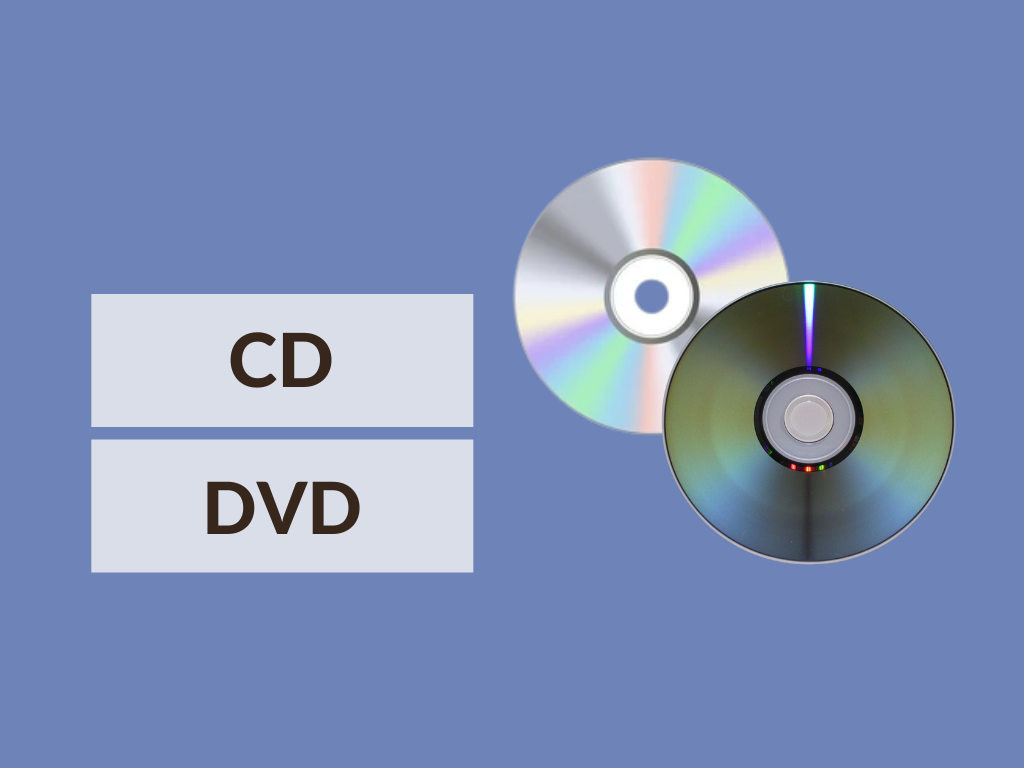In general, we are all aware of the terms CD and DVD. The CD and DVD are two types of optical discs that differ primarily in size and manufacturing method. In general, a DVD can store more data than a CD; one reason for this is that CDs have the polycarbonate substrate on only one side, whereas DVDs have it on both sides.
In this article, you will know the difference between CD and DVD
The CD and DVD use optical technology to retrieve data by using light, specifically lasers. A laser beam is focused into the CD or DVD in order to read and write the content (data) stored on the disc in the form of bits.
CD(Compact disc):
The Compact Disc (CD) was the first step toward the concept of digital data encoding. It employs a one-of-a-kind encoding technique in which a 14-bit code represents a byte, and this encoding technique also aids in error detection.
It was a suitable replacement for the magnetic disc because it provided a low-cost solution for storing large amounts of data.
DVD(Digital versatile disc):
The introduction of DVD (Digital Versatile Disk) provided an alternative to videotape used in VCR (Video Cassette Recorder) and CD-ROM used in PC because DVD can store 7 times more data than a CD. It produces videos with high picture quality and random access.
A DVD is made of the same material as a CD, but the process and layers are different; it is used from both sides, much like two CDs are stuck together. It employs various error correction techniques, including RS-PC and the recording code EFMPlus.
Difference between CD and DVD:
| CD | DVD |
|---|---|
| Full form | |
| Compact disc | Digital versatile disc |
| Capacity | |
| 700 MB is the typical capacity | It ranges from 4GB to 17GB |
| Position on the disk | |
| Recording layer CD position on the disk - top | Recording layer DVD position on the disk - middle of the disk |
| Spacing between loops | |
| Spacing between the loops of the spiral is 1.6 micrometer | Spacing between the loops of the spiral is 0.74 micrometer |
| Between the pits | |
| Spacing between the pits is 0.834 micrometer | Spacing between the pits is 0.4 micrometer |
Bottom line:
As a result of the preceding discussion, The optical recording mediums are the CD and DVD. The CD was designed as an audio storage format, whereas the DVD is used as a universal storage format. The latter technology, DVD, can hold approximately 7 times more data than a CD and has a format efficiency of 32% greater than a CD.
Further readings:


